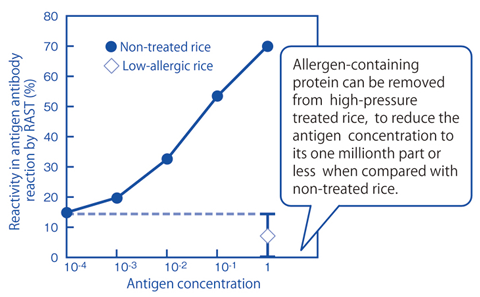What is "High-Pressure treatment"?
Practical cases where high-pressure treatment has been introduced
Changes of physical properties
Improvement of texture and palatability of cooked rice
When high-pressure treatment is applied to rice soaked in water, the cell walls of rice grains are destroyed to improve water permeability. Water is fully absorbed into the center of grains, so that cooked rice becomes puffed up. The starch granules coming out of the cell walls also contribute to a soft and sticky texture. The increased amounts of maltose and oligosaccharide produced by the enzyme reaction in the course of cooking result in a sweeter taste of the cooked rice.
Restoration properties of cooked rice
The higher the degree of gelatinization of starch in cooked rice, the softer, the more digestible and the more palatable the cooked rice becomes.
Even when the cooked high-pressure processed rice is heated again after storage, the degree of gelatinization is restored. Any time you can savor the cooked rice as tasty as freshly cooked.

Improvement of extraction efficiency of ingredient
High-pressure treatment can destroy tissue of food, which makes it possible to efficiently extract targeted ingredients from food. This advantage can be used for preparing stock and extract containing plenty of umami (pleasant savory taste) components or functional components, and removing allergenic substances and substances causing a disagreeable strong taste from food.
-

Stock rich in flavors can be made from half or less the material commonly used.
-

Allergen-containing protein can be removed from rice and wheat more efficiently by extraction.

